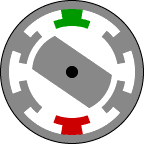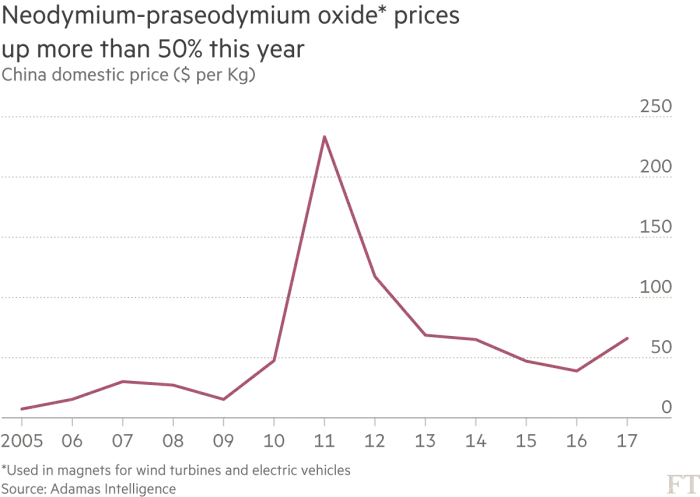<br>
[MAS.865](../../index.html) > [Motion](../../motion) > Reluctance Motors
## Reluctance Motors
####
---
These are a family of electric motors that operate without any permanent magnets as well as no rotor windings or commutators. They work solely on the principle that a rotor will move to minimize the reluctance of the flux path.
The simplest way to envision it is with a single winding and rotor with two poles. In this simple case, when the coil is energized (in either direction), the rotor will turn to minimize the air gap in the magnetic circuit.

This principle can be repeated with more coils to cause the rotor to turn continuously:

Within this family of motors there are two main categories:
- Variable Reluctance Motors (also called Switched Reluctance Motors)
- Synchronous Reluctance Motors
#### Synchronous Reluctance Motors

These motors, in particular, are coming back into fashion. I believe this is in large part to achieve better efficiencies in lower-cost motors. Since these motors don't need any permanent magnets or any of the complexity of commutators, they can be made more economically than other kinds of motors. This resurgence is also in part due to the ability to model/simulate and cheaply fabricate the intricate rotor cores that are needed.

[This is very well written thesis on the topic of synchronous reluctance motors](https://theses.ncl.ac.uk/dspace/bitstream/10443/3486/1/Donaghy-Spargo%2C%20C.M.%202016%20%2812mth%29.pdf). There's good discussion of why these are back in vogue and how they differ from switched reluctance machines.
#### Interior Permanent Magnet Motors
While these are not only using reluctance as the primary motive force, they seem to be piggy-backing on the synchronous reluctance motor trend.
These are a hybrid motor that combine permanent magnets with the synchronous reluctance design. Basically, permanent magnets are simply placed in the slots of the synchronous reluctance motor:

This has the benefit of reducing the amount of magnetic material needed relative to surface permanent magnet machines.
They've been used for ~10 years in the Toyota Prius and will be used in Tesla's Model 3.

<!-- #### Other Resources -->